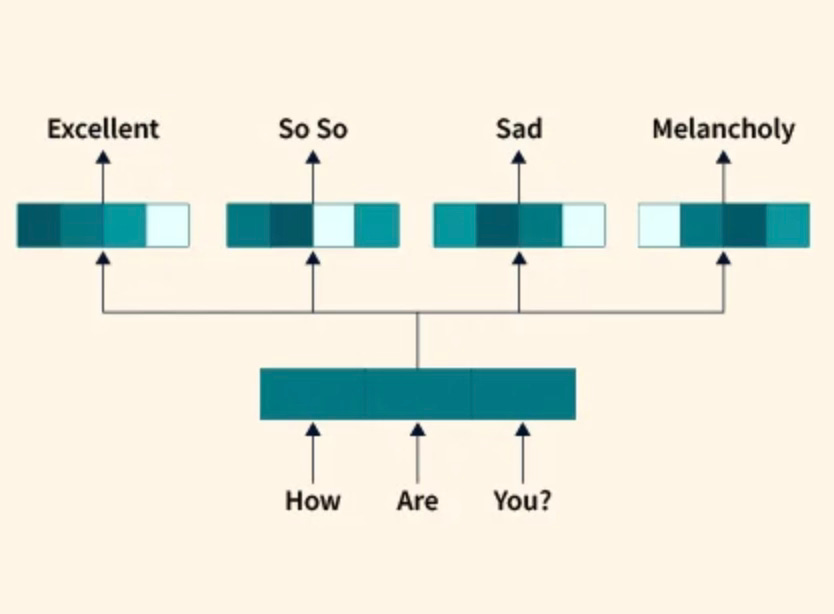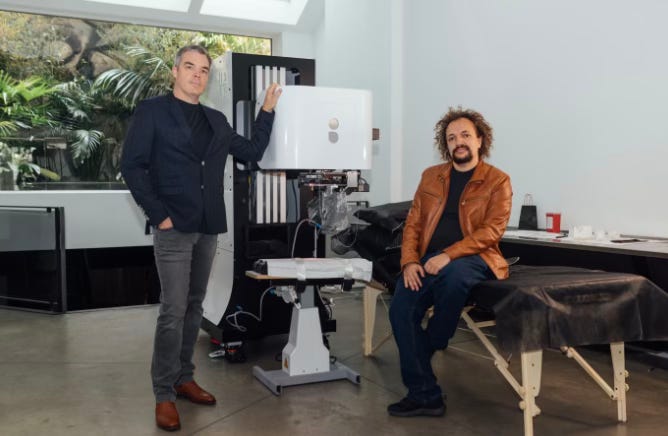Founder’s Note
If there’s one theme that quietly links this week’s stories, it’s this: refinement.
From AI-planned tasting menus to tattoo robots and deepfake regulation, we’re seeing a shift from experimentation to precision - AI not just as a tool for speed, but for craft, clarity and control.
And behind each headline lies a question we all face: What do we still want done by human hands?
That tension - between automation and artistry - is where the future is being shaped.
As always, this edition was crafted with care by the Edvance newsletter team.
We hope it sharpens your thinking, sparks your curiosity, and maybe even challenges a few assumptions.
- Ideja
What’s Brewing in the AI World This Week?
By Niharika Rajesh
🍽️ AI Meets Fine Dining at WOOHOO
Coming to Dubai this September, WOOHOO will feature Chef Aiman, an AI system that helps plan menus and design dining experiences using food science and past culinary data. Real chefs will bring the finishing touches, making it a collaborative effort between tech and taste. It's a glimpse into how AI is spicing up sustainability and creativity in hospitality.
🇩🇰Your Face, Your Rules: Denmark’s AI Deepfake Bill
Denmark wants to give citizens the right to control the use of their face, voice, and likeness in AI-generated deepfakes, allowing civil claims and fines for platforms that don’t cooperate. It’s likely to become the first European law of its kind, setting a bold precedent in identity protection. The move aligns with EU Digital Services Act rules and could reshape how deepfakes are regulated.

⚡️ Huawei’s AI Chip Push in Gulf, Asia
Huawei is actively challenging US tech dominance, aggressively marketing its Ascend AI chips and CloudMatrix systems in the Gulf and Asia. This push is a direct response to US export limits on high-end Nvidia chips. It just goes to show how truly global and geopolitical the AI race has become.
Spotlight Story
Meet the Hottest New Tattoo Artist: An AI Robot
By Mishel Stefanova
A new AI-driven tattoo robot has rolled into a high-end ink shop in New York City and is ready to take appointments by storm.
Developed by Blackdot, the robot scans the recipient’s skin and applies the ink using a triple-pointed needle for precision. Currently, the device is being installed in high-end studios both in Austin and NYC.
Its goal? To deliver a less painful experience (thanks to shallower needle penetration) and improve the precision and consistency of the tattoo application. The robot is primarily used by individuals who prefer reduced discomfort or feel uncomfortable in traditional tattoo settings. It also excels at simple or repetitive artwork, such as letters and dot work that human artists may not enjoy doing. So far, Blackdot has managed to raise $7 million to develop and deploy the device, opening it to customers who may be interested in a unique, tech-driven experience, and for those previously deterred by tattoo anxiety or pain.
Joel Pennington, Blackdot’s founder, sees this as a natural evolution for the industry, comparing it to how the printing press revolutionised manuscript writing. Not everyone agrees. Some tattoo artists have voiced concerns about the technology’s impact on their profession, with fears of job loss and the potential devaluation of artistic skill. Despite this, Blackdot has insisted that the robot is by no means replacing artists but is simply an additional tool to be used and serve a different market: people who seek efficiency, precision and a clinical experience.
What do YOU think?
Is this a step forward for the tattoo community or a huge setback? Could similar tools shake up other creative or manual professions? Is the prospect of humans working alongside robots exciting or dreadful?
Let us know what you think in the comments!
AI Action Corner
Stress-Test Your Assumptions
By Mishel Stefanova
Need help with organisation? Perplexity AI can help!
Just insert the prompt:
“Can you make a table for ‘x’ and summarise ‘y’?”
And watch it condense your research into actionable notes!
AI 101
Attention Mechanism
By Niharika Rajesh
= A core feature inside tools like ChatGPT that acts like a spotlight, guiding the system to the most relevant parts of your input so that it can respond with context and coherence.

Why this matters:
They help AI understand nuance, maintain context, and prioritise what matters most in your input. It’s why AI can now summarise emails, analyse tone, or keep track of a long chat without getting lost.
Weekly AI Challenge
Model Memory Check
By Niharika Rajesh
Ask your AI to summarise a long article or transcript. Then, ask it detailed questions about what it just summarised.
Notice what it retains and what it forgets.
🎯 This builds your intuition about how AI handles memory and detail.
PS. Ready to transform AI knowledge into actionable strategy? At Edvance AI, we specialise in strategic implementation that drives real organisational change (think workshops, AI audits and workflow automation). Reply to this email to start your AI journey!




